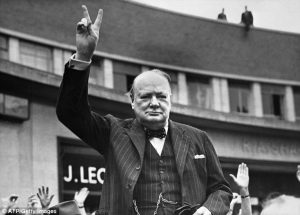The Start of the Decolonisation Process of the British Empire: The Dominions, and the Commonwealth.
As early as 1871 she was participating in treaty making. By the 1920s the Dominions were taking an increasingly autonomous stand in foreign affairs, refusing to come to Britain’s call in 1922 and overall taking a rather insular view of international problems. In 1939, the coming of the war indicated the individual position of the different Dominions. There was now no imperial unity in matters of foreign policy or defence. Eire, which had joined the ranks of the Dominions as the Irish Free State in 1922, went its own way, declaring neutrality. In South Africa a bitter debate took place on entry into the war. On the other hand in Australia and New Zealand stronger emotional ties with Britain clouded the issue. Politicians there talked of an automatic commitment; in any case, their defence arrangements involved close co-operation with Britain. As a contrast to Australia and New Zealand, which were slow to take initiatives showing their full sense of independence in foreign and defence matters, throughout the 1920s and 1930s, Canada, South Africa and Eire were pushing the matter and by 1939 had already established diplomatic missions in foreign countries. Australia and New Zealand still were more vulnerable to foreign attack and so naturally felt a stronger need for great power protection. Until Japan swept through the Pacific and the fall of Singapore shattered this belief of being under its protection, Britain had been a protecting power for them. At this point reliance was quickly transferred to another great power, the United States.
The undertaking of the war between 1939 and 1945 showed how the spirit of independence had grown since 1814-18. Now with each Dominion having full control over its own foreign policy and defence forces there was no imperial War Cabinet. However, a common imperial spirit persisted and there was daily communication between London and Dominion capitals; also Dominion representatives were put on various British boards and agencies. “The constitutional changes underlying this assertion of national independence and whittling down of the supremacy of the British parliament were formulated in various conferences during the 1920s. In particular the Balfour Declaration of 1926 (as to the nature of dominion status) and the subsequent Statute of Westminster of 1931 gave the British Constitutional seal to the demands of the Canadian, South African and Irish governments for full Dominion competence.”5 Thereafter, for instance, the governor general of a Dominion came to be acknowledged as a representative of the Crown and not of the British government. Thus the power officially vested in his office was merely ceremonial and seldom implemented. “In future, British legislation applied in a Dominion only at the latter’s request and consent while Dominion legislation would not be invalid because it was repugnant to a British statute. Even so, a few limitations on constitutional competence persisted – for example, to some of the constitutions creating federations, especially where it was intended to protect or entrench certain interests or rights.”6 South Africa on the other hand took up a position of extreme of extreme constitutional independence, acquiring in the 1930s the right to secede or become a republic.



